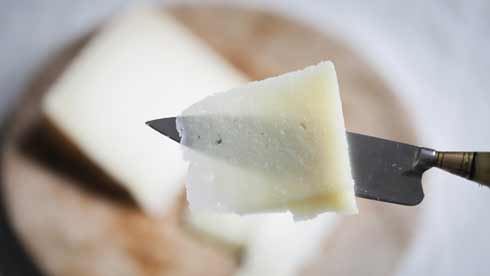Queserías Picos de Europa has been our supplier for more than 20 years. Opened by Javier and Tomas Alonso in 1986 in the beautiful Picos de Europa Mountains in the north of Spain, they come from a family that has made cheese in the area for generations.
THE SMALL TOWN OF POSADA DE VALDEÓN AND SURROUNDINGS
The company was founded in the small town of Posada de Valdeón that sits beneath the highest peaks of the Picos de Europa in Asturias. The old factory is not in use any more as it collapsed under the weight of snow during last winter, although they want to begin producing cheeses there again. The new production site is further south in the town of Cistierna in Castilla y León.
THE MILK PRODUCERS
The milk used to produce this blue cheese come from goats and cows and is supplied by two different businesses.
Rodrigo is the owner of a flock of 300 Florida goats in the area; this is a race that originates in Seville but has been found to thrive in more northerly regions as well and is used because of the quality of its milk and its ability to withstand the extremes of temperature from winter to summer. Rodrigo herds his goats with a pack of large dogs which are required, not just to move the animals when necessary, but also as a deterrent to the wolves which have been increasingly active in the area and killed dozens of goats over the past few years. When we visited it was late April and the animals had just begun to spend time grazing outdoors until November.

In a barn next door three brothers, Isidoro, Victor and Vitorino look after their herd of cows, a mixture of Limousin cattle that are used for beef production and 40 Parda cows, originally from American stock, which produce milk. The beautiful animals were being fed hay, silage and cereals, before moving out to graze on the new grass. Watching some of the cows as they moved outdoors for the first time in six months, it was evident that they enjoyed the freedom, chasing each other and engaging in mock battles. Victor pointed to some nearby hills and explained that over the coming months the cows would be grazing on the upper slopes, sleeping where they chose and returning twice a day for milking.

THE PRODUCTION PROCESS
The degree of automation in the dairy is limited; the milk is piped from the storage tanks through a pasteurized and into the cheese vats where penicilium roquefortium and a starter culture are added, and it is then warmed, rennet is added and the milk is left to solidify. After this time the curd is cut into hazelnut sized pieces. The curds and whey are then piped out of the vats simultaneously, the whey being drained off (to be given to a local farmer to feed his pigs) and the curds travelling on a conveyor belt to a table where the cheese moulds sit, these are filled about 20 at a time.
The cheeses are not pressed, either manually or by machine but allowed to drain naturally for a period of 24 hours. They are then salted (unusually the dairy uses rock salt rather than sea salt) and left for a day before being moved to a drying room for a further day. On the fourth day the cheeses are pierced in order to allow the air to penetrate the cheeses and activate the penicilium. The cheeses are then matured on their sides for a period of around 45 days to allow airflow through the cheeses over this time. Finally, when the cheeses are ready for packing, they are wrapped by hand either in foil or in maple leaves depending on the customer’s preference.
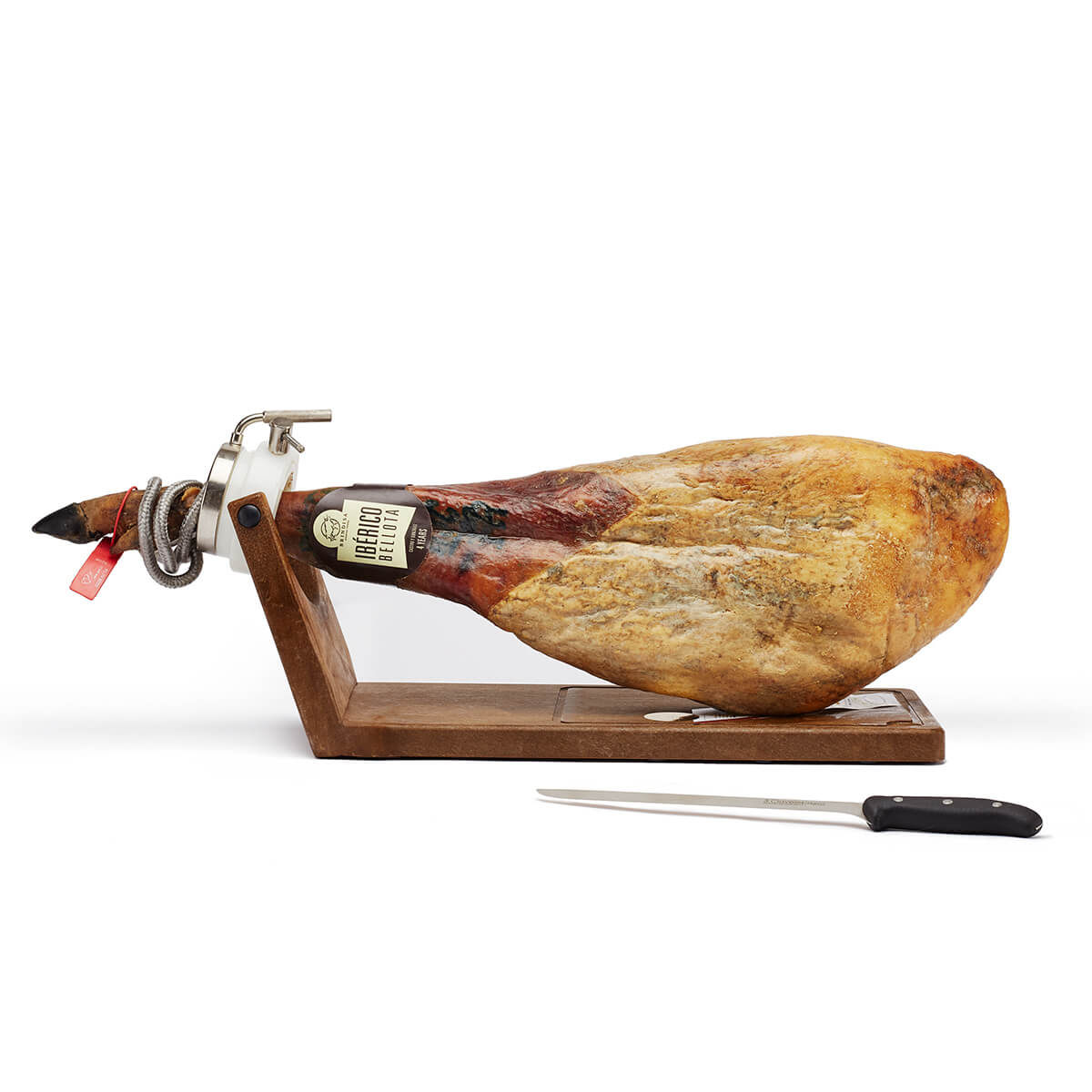 Brindisa Bellota 75% Iberico Ham Kit
Brindisa Bellota 75% Iberico Ham Kit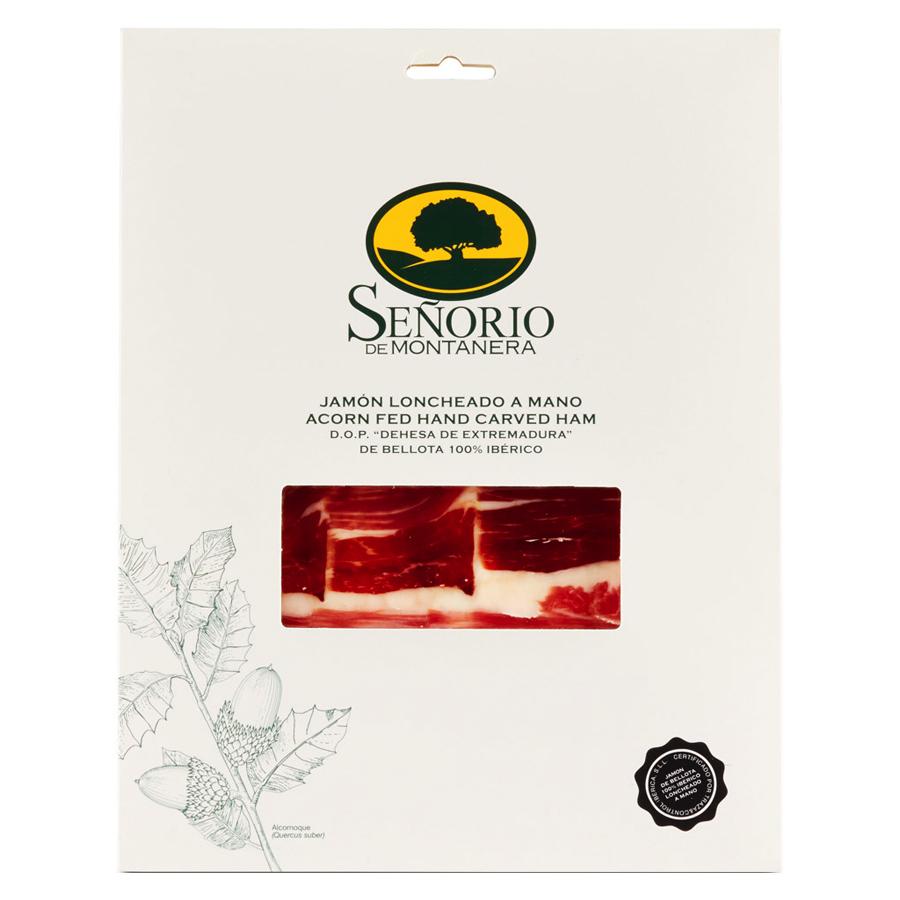 100% Iberico Hand-Carved Ham
100% Iberico Hand-Carved Ham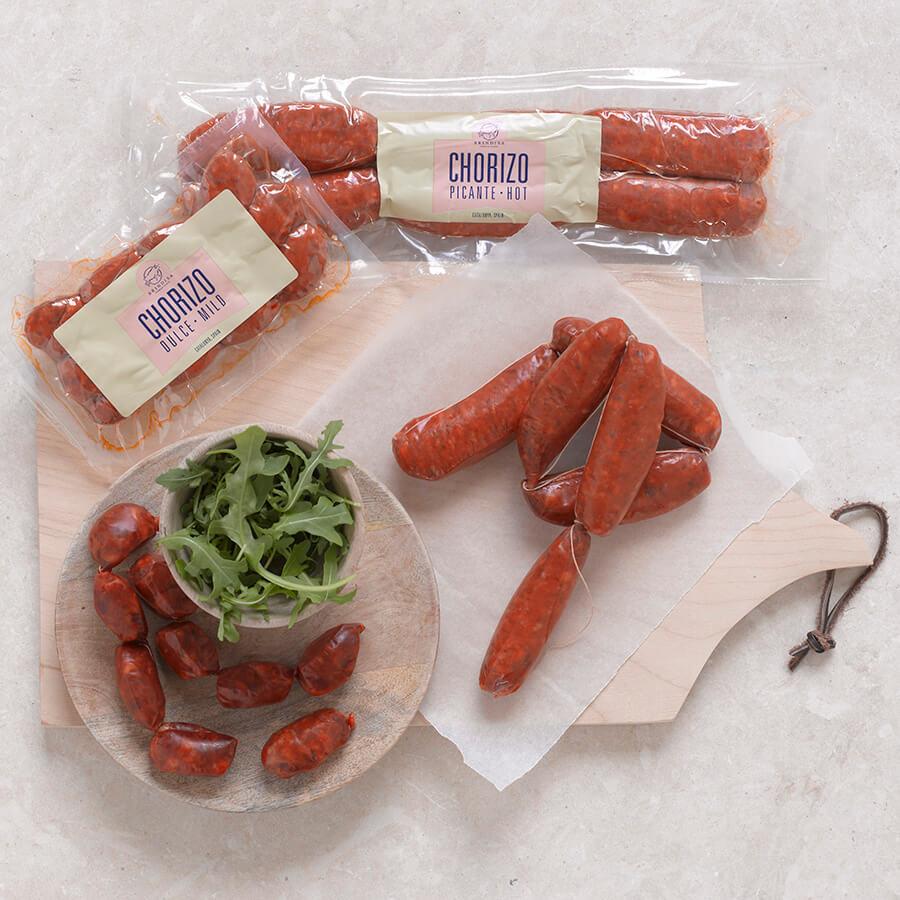 Cooking Chorizo
Cooking Chorizo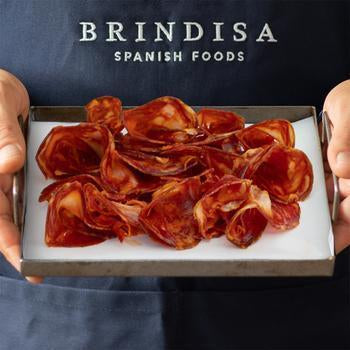 Freshly Sliced Charcuterie
Freshly Sliced Charcuterie Truffle Manchego
Truffle Manchego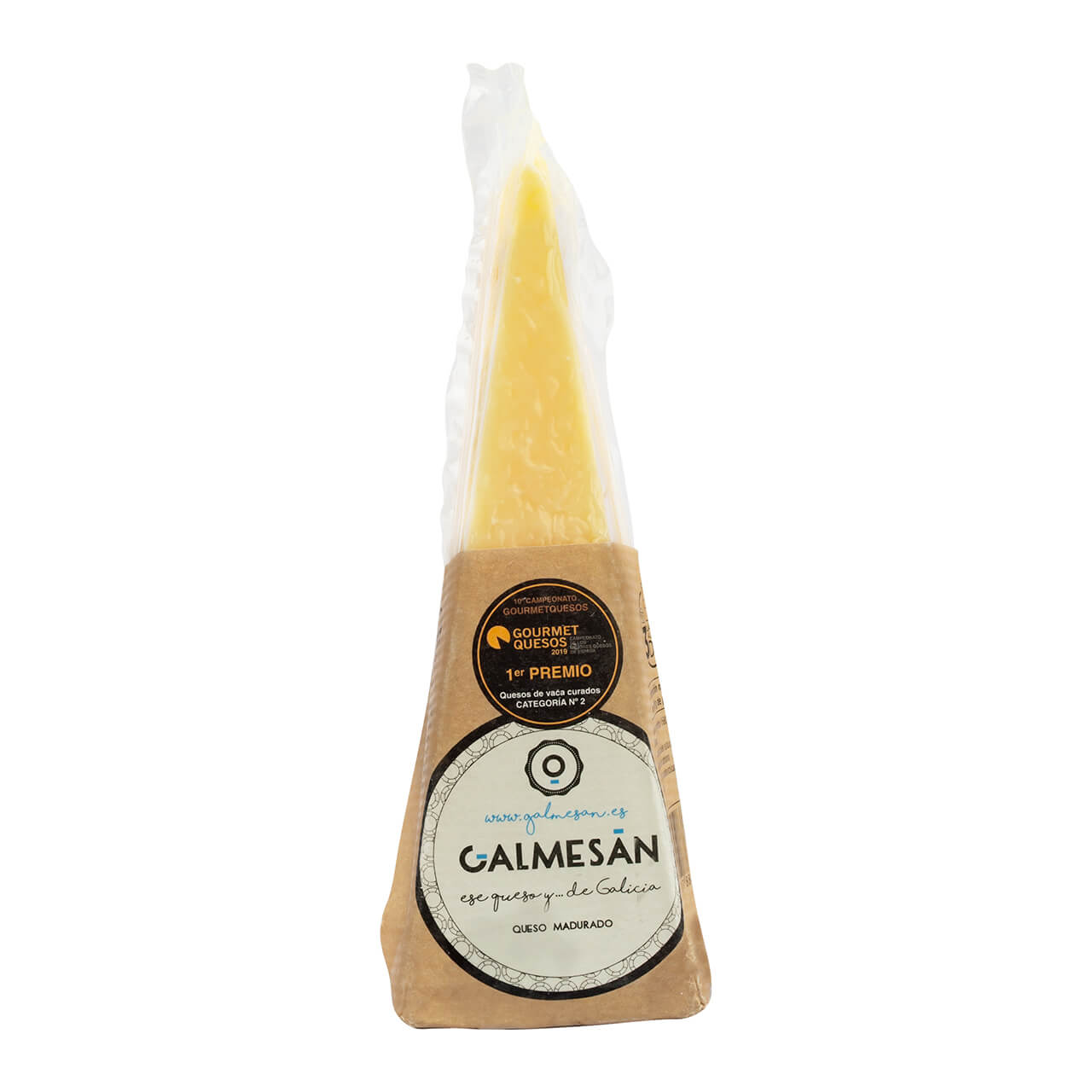 Galmesan Wedge
Galmesan Wedge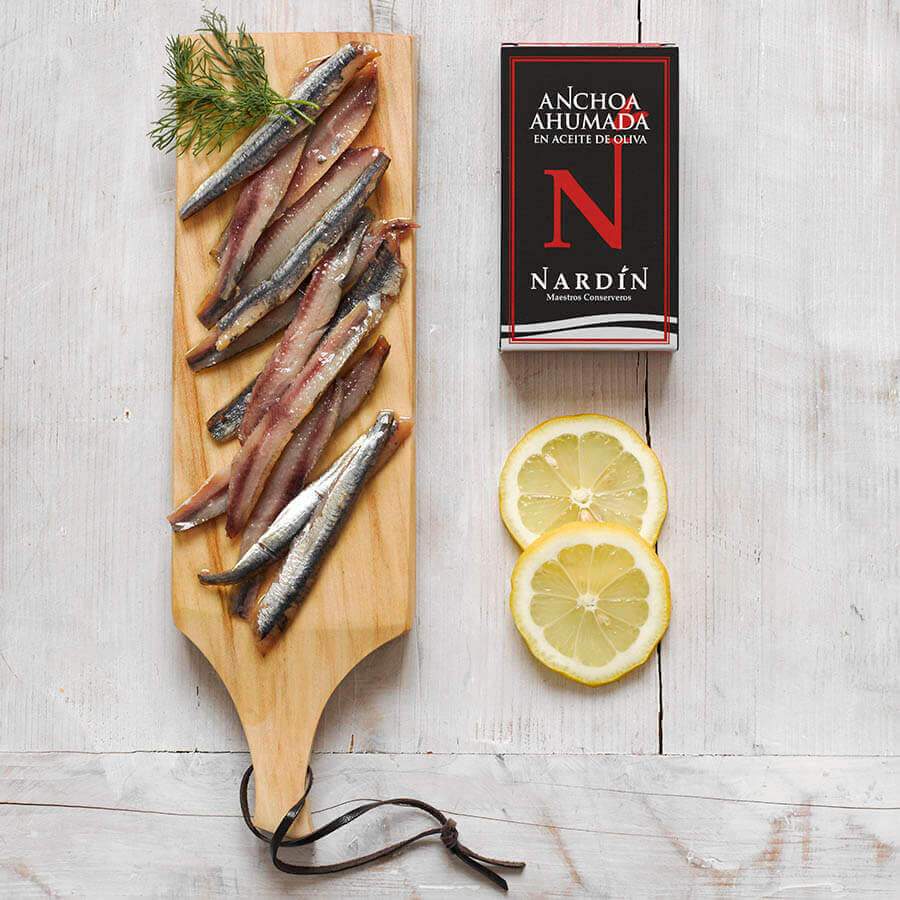 Beech Smoked Anchovies
Beech Smoked Anchovies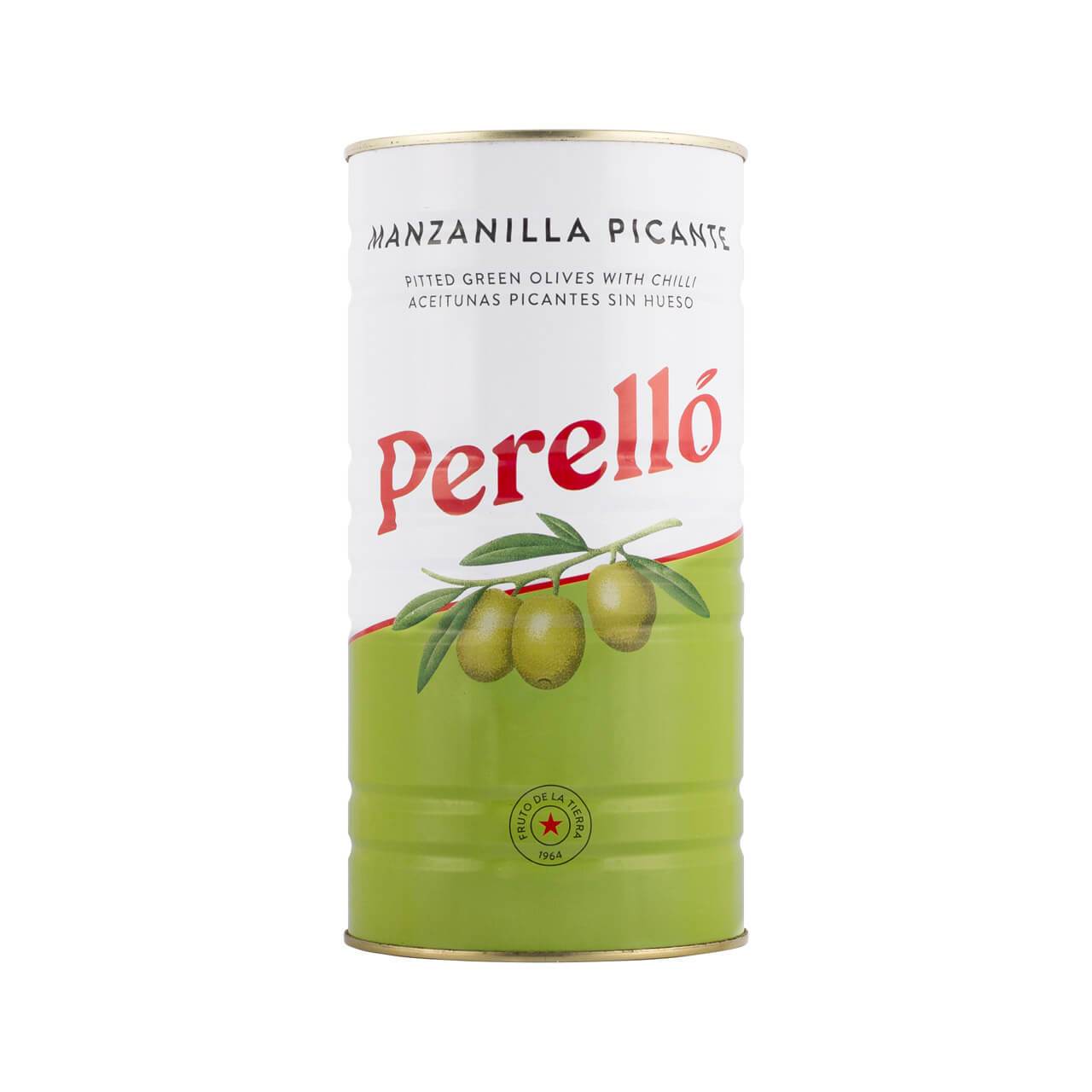 Perello Manzanilla "Martini" Olives
Perello Manzanilla "Martini" Olives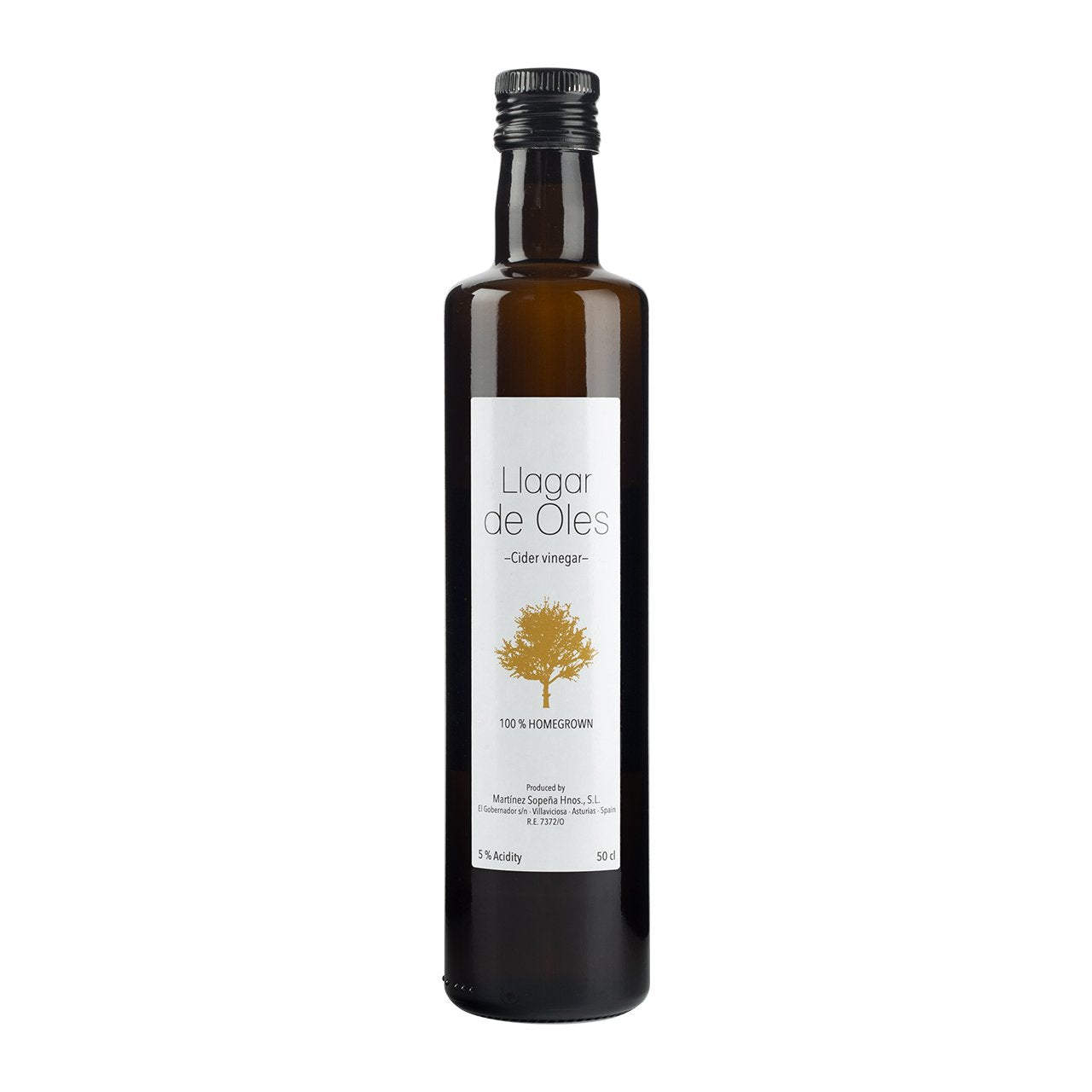 Apple Cider Vinegar
Apple Cider Vinegar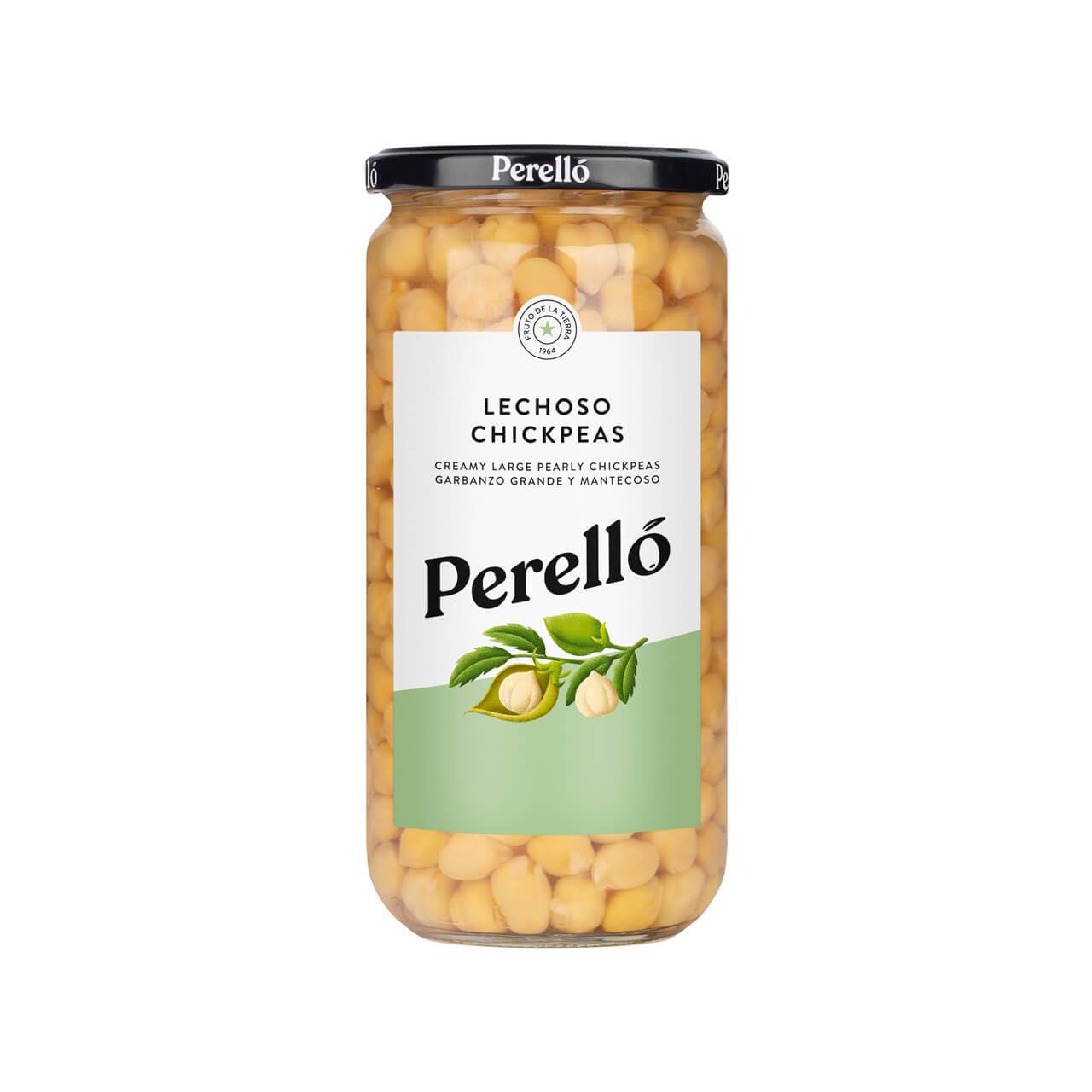 Perello Chickpeas
Perello Chickpeas Buy a Gift Card
Buy a Gift Card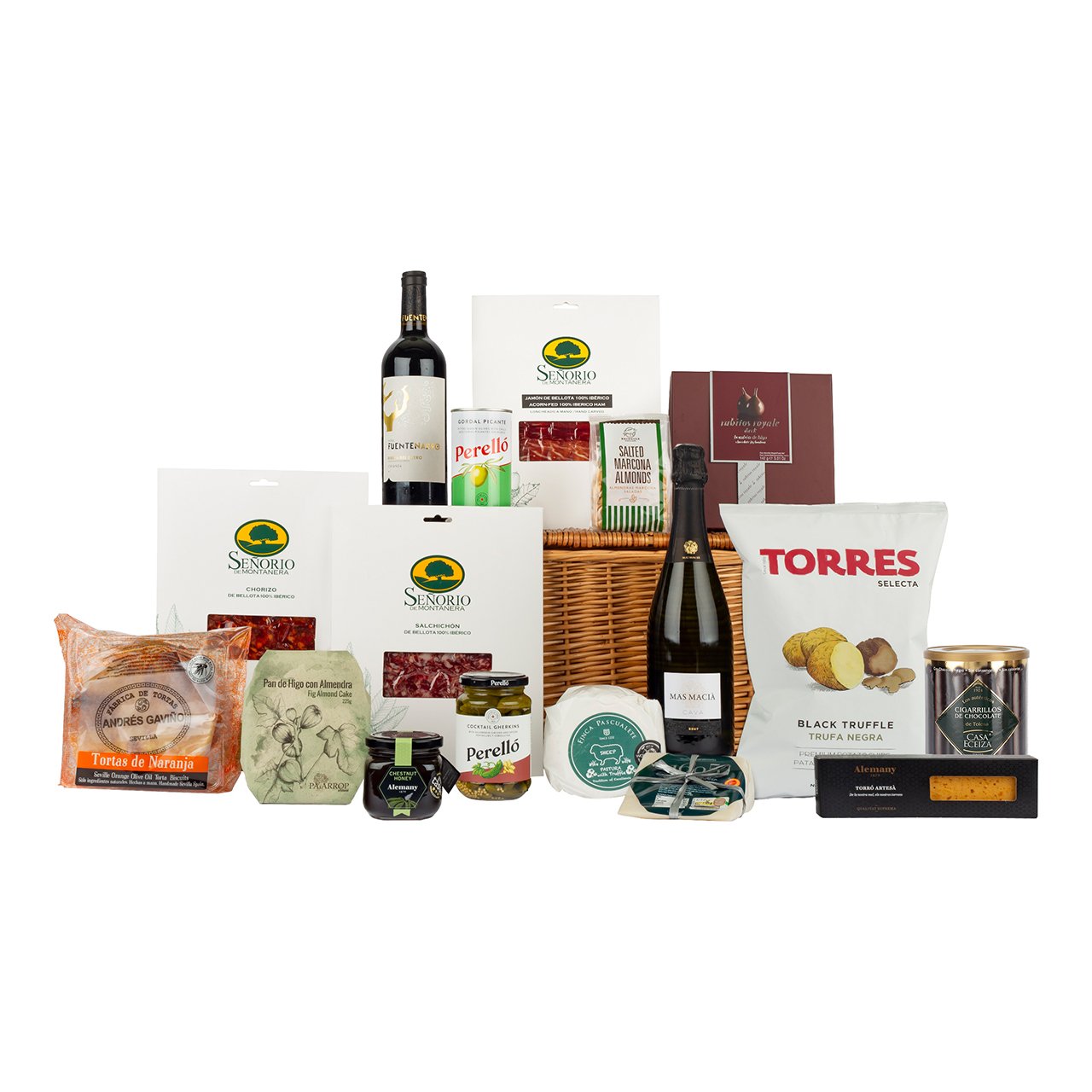 Celebration Hamper
Celebration Hamper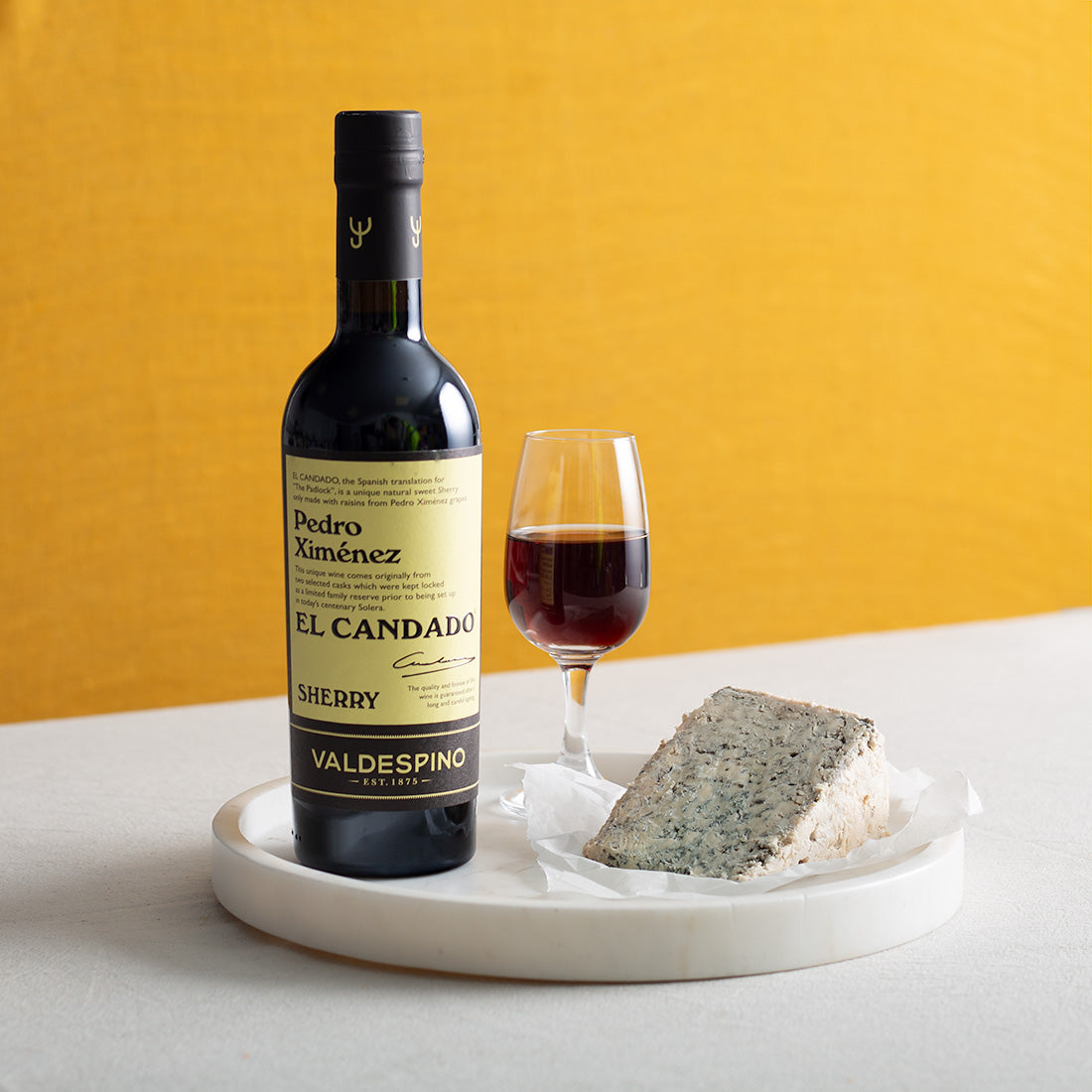 Sherry
Sherry Sparkling Cava for Christmas
Sparkling Cava for Christmas Perello Olives
Perello Olives Navarrico Butter Beans
Navarrico Butter Beans
